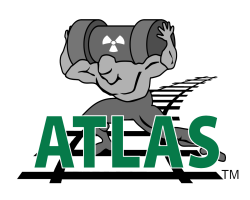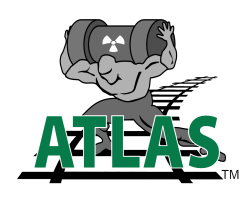Category of Content
Siting Experience Documents Only
Publication Date
Subject Matter
Keywords
Performance Specification for Standardized Transportation, Aging, and Disposal Canister Systems
Performance Specification for Standardized Transportation, Aging, and Disposal Canister Systems
Appendix B – Revised Railcar-to-Cradle Attachment Interface
Appendix B – Revised Railcar-to-Cradle Attachment Interface
Appendix D – Revised Conceptual Cradle Design Family 4
Appendix D – Revised Conceptual Cradle Design Family 4
Standardized Transportation, Aging, and Disposal Canister Feasibility Study
Standardized Transportation, Aging, and Disposal Canister Feasibility Study
Nuclear Fuels Storage and Transportation Requirements Document
Nuclear Fuels Storage and Transportation Requirements Document
Task Order 18 Updated Final Report: Generic Design for Small Standardized Transportation, Aging and Disposal Canister Systems UPDATED FINAL REPORT
Task Order 18 Updated Final Report: Generic Design for Small Standardized Transportation, Aging and Disposal Canister Systems UPDATED FINAL REPORT
Task Order 17 – Cask Design Study Final Report
Task Order 17 – Cask Design Study Final Report
Public Preferences Related to Consent-Based Siting of Radioactive Waste Management Facilities for Storage and Disposal: Analyzing Variations over Time, Events, and Program Designs
Public Preferences Related to Consent-Based Siting of Radioactive Waste Management Facilities for Storage and Disposal: Analyzing Variations over Time, Events, and Program Designs
Incorporating Uncertainty in RADTRAN 6.0 Input Files
Incorporating Uncertainty in RADTRAN 6.0 Input Files
ATLAS Railcar Design Project Status Report
ATLAS Railcar Design Project Status Report
DOE Atlas Railcar Project End-of-Phase 2 Final Report
DOE Atlas Railcar Project End-of-Phase 2 Final Report
Atlas Phase 2 Final Report Appendix A
Atlas Phase 2 Final Report Appendix A
This document provides a white paper detailing required changes to the DOE Atlas railcar conceptual cradle attachment components and Phase 1 conceptual cradle design due to the addition of the HI-STAR 190 SL and XL casks to the project.
Atlas Phase 3 Report - Prototype Fabrication and Delivery
Atlas Phase 3 Report - Prototype Fabrication and Delivery
The United States Department of Energy (DOE) is preparing for future large-scale transport of spent
nuclear fuel and high-level radioactive waste, which are collectively defined as High-Level Radioactive
Material (HLRM) by the Association of American Railroads (AAR). A part of this preparation includes
designing railcars to be used for the transport of HLRM.
Atlas Phase 2 Report - Preliminary Design
Atlas Phase 2 Report - Preliminary Design
The United States Department of Energy (DOE) is preparing for future large-scale transport of spent nuclear fuel and high-level radioactive waste, which are collectively defined as High-Level Radioactive Material (HLRM) by the Association of American Railroads (AAR). A part of this preparation includes designing railcars to be used for the transport of HLRM.
Representing future generations in public participation procedures regarding the siting of a nuclear waste repository
Representing future generations in public participation procedures regarding the siting of a nuclear waste repository
State decisions regarding a repository for high-level radioactive waste have an extraordinary intergenerational significance. The academic legal discussion has increasingly strengthened the status of future generations in constitutional law. In its recent decision on the German Climate Protection Act, the Federal Constitutional Court equally emphasised that state actors have an obligation to protect future generations. Fundamental rights of future generations thus have an anticipated effect in the present.
The Art of Being Ethical and Responsible: Print Media Debate on Final Disposal of Spent Nuclear Fuel in Finland and Sweden
The Art of Being Ethical and Responsible: Print Media Debate on Final Disposal of Spent Nuclear Fuel in Finland and Sweden
After decades of preparation, the final disposal of spent nuclear fuel has reached the construction stage in Finland, and the neighboring Sweden is likely to soon follow in the footsteps. These Nordic countries rely on a similar technical concept based on passive safety, advocated as a means of minimizing the burden to future generations. The scholarly literature on the ethics of nuclear waste management has thus far paid little attention to the views of the broader publics on the associated ethical challenges.
Interim Storage, Environmental Justice, and Generational Equity
Interim Storage, Environmental Justice, and Generational Equity
With the termination of the Yucca Mountain project, which was proposed to be our nation’s first repository for the disposal of military and civilian spent nuclear fuel and high-level radioactive waste, the future of nuclear waste management and disposal in this country became increasingly uncertain. Interim storage has been advocated by many as a temporary solution while a permanent solution is studied for potentially several more decades to come.
Fostering stakeholder involvement across generations - participation after site selection
Fostering stakeholder involvement across generations - participation after site selection
In October 2022, the NEA Forum on Stakeholder Confidence (FSC) organised, in collaboration with the Belgian Agency for Radioactive Waste and Enriched Fissile Materials (ONDRAF/NIRAS), a national workshop in Dessel, Belgium, to explore the topic of stakeholder involvement across generations.
Building on previous work on this topic, participants gathered to discuss how to keep local communities involved in radioactive waste management after site selection, how to engage youth as key stakeholders and which approaches can be used to communicate with stakeholders now and in the future.
Intergenerational justice starts now: Recognizing future generations in nuclear waste management
Intergenerational justice starts now: Recognizing future generations in nuclear waste management
Intergenerational justice is an inherent component of nuclear waste management. By looking at challenges of intergenerational justice at various stages of the repository siting process, the following thesis is discussed: Current generations can anticipate notions of intergenerational justice by applying high procedural standards to enable equitable distribution between generations and thus adequately recognize the needs of future generations. Applying high standards in this context means a constantly critical, reflexive, and open process, without bias or selfishness.
Intergenerational Ethical Issues and Communication Related to High-Level Nuclear Waste Repositories
Intergenerational Ethical Issues and Communication Related to High-Level Nuclear Waste Repositories
Purpose of Review: The nuclear power industry started in the 1950s and has now reached a phase of disposing high-level nuclear waste. Since the 1980s, the United Nations has developed a concept of sustainable development and governments have accordingly made ethical commitments to take responsibility towards future generations. The purpose of this review is to examine ethical dilemmas related to high-level nuclear waste disposal in a long-term perspective including potential access to the waste in the future.
Perceptions of justice influencing community acceptance of spent nuclear fuel disposal. A case study in two Finnish nuclear communities
Perceptions of justice influencing community acceptance of spent nuclear fuel disposal. A case study in two Finnish nuclear communities
Final disposal of spent nuclear fuel (SNF) from nuclear power plants (NPPs) is an ethical issue with implications within and across generations. We address this issue from the perspective of nuclear communities that host nuclear waste disposal sites. These are primarily the communities that face injustice due to the potential radiological risks. A resident survey (n = 454) was conducted in two Finnish nuclear communities, i.e. Eurajoki and Pyhäjoki, that are being considered as alternative sites for a second repository for SNF.
Developing a Siting Strategy for a Nuclear Fuel Waste Management Facility
Developing a Siting Strategy for a Nuclear Fuel Waste Management Facility
Although different policies for radioactive waste management, including nuclear fuel waste (NFW), have developed in different countries, the basic challenge is the same everywhere: finding a method and a place for isolating the radioactive waste from the biosphere. During the last decade, this issue has moved to a new phase where responsible authorities and companies are now facing the task of implementing waste disposal or management strategies. A number of countries (e.g.
Consent-Based Siting: What Have We Learned?
Consent-Based Siting: What Have We Learned?
The president realized that the nation lacked a clear policy for developing a deep-mined geologic repository for high-level radioactive waste and spent nuclear fuel. New legislation would be required to chart a more promising path forward. The views of multiple parties had to be taken into account. He decided to create a high-level body to ventilate the issues involved and to make recommendations. He charged the group with holding public meetings and soliciting comments on draft documents to make the deliberations as transparent as possible.
Transportation Planning: Indigenous Dialogue
Transportation Planning: Indigenous Dialogue
In 2019, the NWMO commissioned Maawandoon Inc to lead Indigenous Dialogue session to support NWMO’s transportation planning for the long-term care of Canada’s used nuclear fuel. This research built upon and complemented public attitude research carried out in 2017 and 2018. The research methodology consisted of 7 Indigenous dialogue sessions and attendance at 3 Indigenous Annual General Assemblies (AGA)/meetings with dialogue components.



